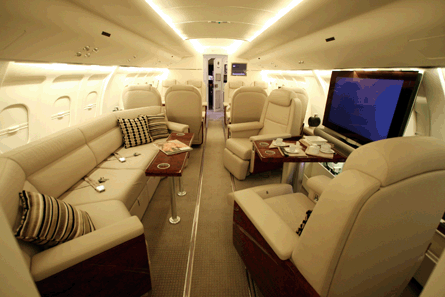The business aviation industry is fighting back against the perception that it is an environmentally unfriendly extravagance.
Organisations such as the General Aviation Manufacturers Association, the National Business Aviation Association and the European Business Aviation Association announced at the EBACE business aviation exhibition in Geneva that they are uniting to educate governments, the press and the public globally about business aviation's contribution to the economy - a process that is already under way.
The EBAA recently led the campaign with a groundbreaking study by analysts PricewaterhouseCoopers that put figures on the business aviation sector's contribution to the European Union's economy. PWC says that, at the most conservative estimate, the sector was worth €19.7 billion ($26.7 million) in 2007 and supported 164,000 jobs, many of them highly skilled.
EBAA chairman Brian Humphries says that companies with a corporate aircraft and operators themselves have not helped their cause by being unprepared to explain what they do when challenged by journalists or politicians to justify their existence. To counter this, the EBAA has prepared a briefing for companies that use business aviation - and for corporate operators - explaining how to cut through press scepticism by supplying facts.
In the USA, GAMA has relaunched its well-tried "no plane, no gain" campaign in the spirit of the new age, and is lobbying government to persuade politicians that antipathy to general aviation in general and business aviation in particular destroys highly skilled jobs in the manufacturing, operational and engineering sectors.
 |
|---|
Meanwhile, GAMA's recently formed partner EGAMA is working in Brussels to spread the same message at the heart of European Union government.
Humphries, formerly a senior executive at Shell Aviation, says that business aircraft manufacturers have not done themselves favours by loading their advertising with images of "champagne flutes and luxury interiors". Advertising, he says, would do better to feature executives using the aircraft as a workplace, poring over laptops preparing for the meeting they are flying to. He says his memory of using Shell's corporate fleet consisted mainly of drinking coffee out of paper cups and not having enough room for his feet.
Figures emerging from a number of recent studies will enable the industry organisations to press their case that business aviation is the economic force and business tool they claim it is.
Among these are EGAMA calculations that general and business aviation manufacturing in Europe supported 36,000 highly skilled jobs in 2008, generated 1,168 shipments, and produced €8.8 billion in revenues.
A different source, air traffic management agency Eurocontrol, says its analysis of business aviation movements show that this sector of the industry genuinely does connect city pairs that airlines do not serve direct - 90,000 of them.
Source: Flight International























